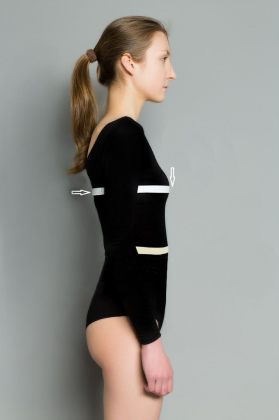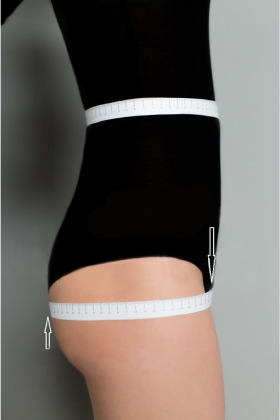How to sew knit fabrics. Tips for beginners.
The knit garments are very pleasant and comfortable to wear and their range nowadays is truly huge: from sport and loungewear till elegant evening gowns. Knit fabrics are quite easy to sew, however, some beginners or people, who haven’t worked with such materials before, may find it challenging.
In this article we are going to explain how to work with knit fabrics.
How to choose the right knit fabric
Terry, interlock, ponte knit, biflex and jersey are only some of the knit fabrics available nowadays in fabric stores. Each fabric has its individual properties and use. An article in our blog will help you to understand better the differents types of knit.
When choosing the fabric for the future garment you have to take into consideration the ease of the pattern. The ease may be positive or negative. For the patterns with a negative ease you will need a well stretchy material. The stretch factor will help you to choose the right fabric, even if you shop online.
The stretch factor is the ratio between the length of the stretched material to the length when the material is not stretched. Less stretchy materials will have the stretch factor closer to 1, for more stretchy fabrics the stretch factor will be decreasing.
In the instructions to GRASSER patterns we provide recommendations for fabric selection, including the specification of the fabric’s stretch factor.
How to determine the stretch factor of the knit
1. Take the fabric you are going to use for your garment. Fold the fabric perpendicularly to the selvage.
Measure 10 cm, draw the marks.

2. Stretch the material without distorting the knitted columns.
Write down the length of the stretched knit. We have 12.5 cm.

3. 10 cm (initial length) is divided by the stretched length, i.e. 12.5 cm.
10 : 12,5 = 0,8
The stretch factor of our knit is 0.8 cm.
How can you use the stretch factor while sewing, using ready-made patterns? Here are several tips.
● If the stretch factor of your fabric equals the recommended one, choose your normal size.
● If the stretch factor of your fabric is greater than the recommended one (i.e. the fabric is less stretchy), select a larger size and leave bigger seam allowances for the fitting.
● If the stretch factor of your fabric is less than the recommended one (i.e. the fabric is more stretchy), you will, possibly, lessen the pattern during the fitting.
What type of equipment is necessary for sewing knit?
The machine you’ll need the most is a four-thread overlocker. Many knit garments can be sewn by using this machine only.
You will also need a straight-stitch machine and a safety-stitch machine. We are going to explain you later how you can replace a safety-stitch machine.
Can a knit fabric be sewn without an overlocker?
If you do not have an overlocker, you can stitch the pieces of your garment with the stretchy stitches of your sewing machine. It can be a zigzag stitch, overlocking stitch or jersey stitch (which sews three stitches forward and one backward). Assure you have tested your sewing machine settings on a scrap piece: the line of stitches must be stretchy to prevent ripping of the seam while wearing. We recommend to sew regular fit or loose fit garments out of the fabrics with the high, close to one, stretch factor, as far as the stretch stitch on sewing machines does not stretch well.
Tools you need while sewing knit garments.
- Choose the needles suitable for knit: stretch needles or jersey needles. Such needles have rounded point, which goes through the knit fiber, without damaging it. The needle number to select depends on your fabric density: the higher the number of the needle the higher the density of the knit the needle is used for.
- There are special needles for overlockers and safety-stitch machines. In contrast of the needles used on straight-stitch machines, the overlocker needles have a groove on the reverse side and a reinforced point. The needle structure helps the overlocker to create the stitches and not to leave gaps.
To tell the truth, many home overlockers sew well with sewing machine needles. However, if your overlocker leaves gaps (what can often happen while sewing thick fabrics, such as terry), using an overlocker needle may be a solution.
– To reinforce some edges (for example, shoulder edges), you can use a silicone tape.
– For very stretchy fabrics we advise to choose textured thread for the upper and lower loopers, leaving for the right and left needles all-purpose thread. The textured thread in the upper and lower loopers will provide the stitch with a good stretch and strength.
How to replace a safety-stitch machine
The most common way of hemming a knit garment is to sew the hem allowance in place on a safety-stitch machine. However, not everyone has this type of equipment as well as it doesn’t make sense to purchase and keep a machine for a few operations. Besides, the safety-stitched machine can be replaced, here it is how.
Overlock the hem edge and fold it inside as necessary.
After that you can choose one of the following methods of hemming.
- Sew the hem allowance in place with invisible stitches. This method suits for thick or low-density fabrics. The benefit of this method is that you cannot see the stitches on the right side.
- Sew the hem allowance in place by using a double needle. The seam will look very mich like the safety stitch. The downside of the method is that the line sewn with a double needle does not stretch well enough. We do not recommend to use this method for tight garments with big negative ease.
- You can sew the allowance in place with a zigzag stitch or with a 3-step zigzag stitch. This method is used for sewing underwear and swimwear on home sewing machines.In order to prevent the seam of the swimwear from stretching and to provide its excellent fitting to the body it should be reinforced with latex elastic tape. How to sew a swimsuit we demonstrate in our online tutorials: Sewing of a Whole Piece Swimsuit and Sewing of a Bikini Swimsuit.


















